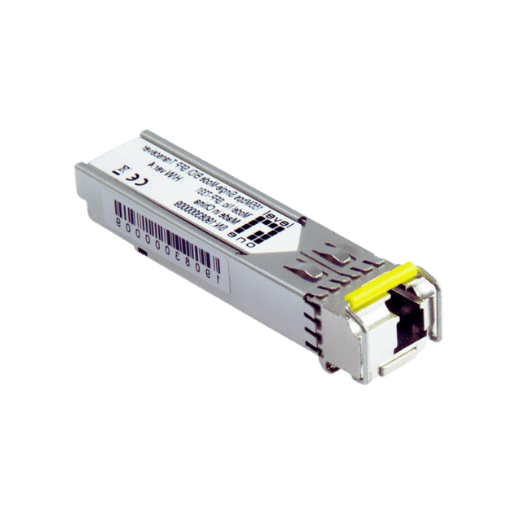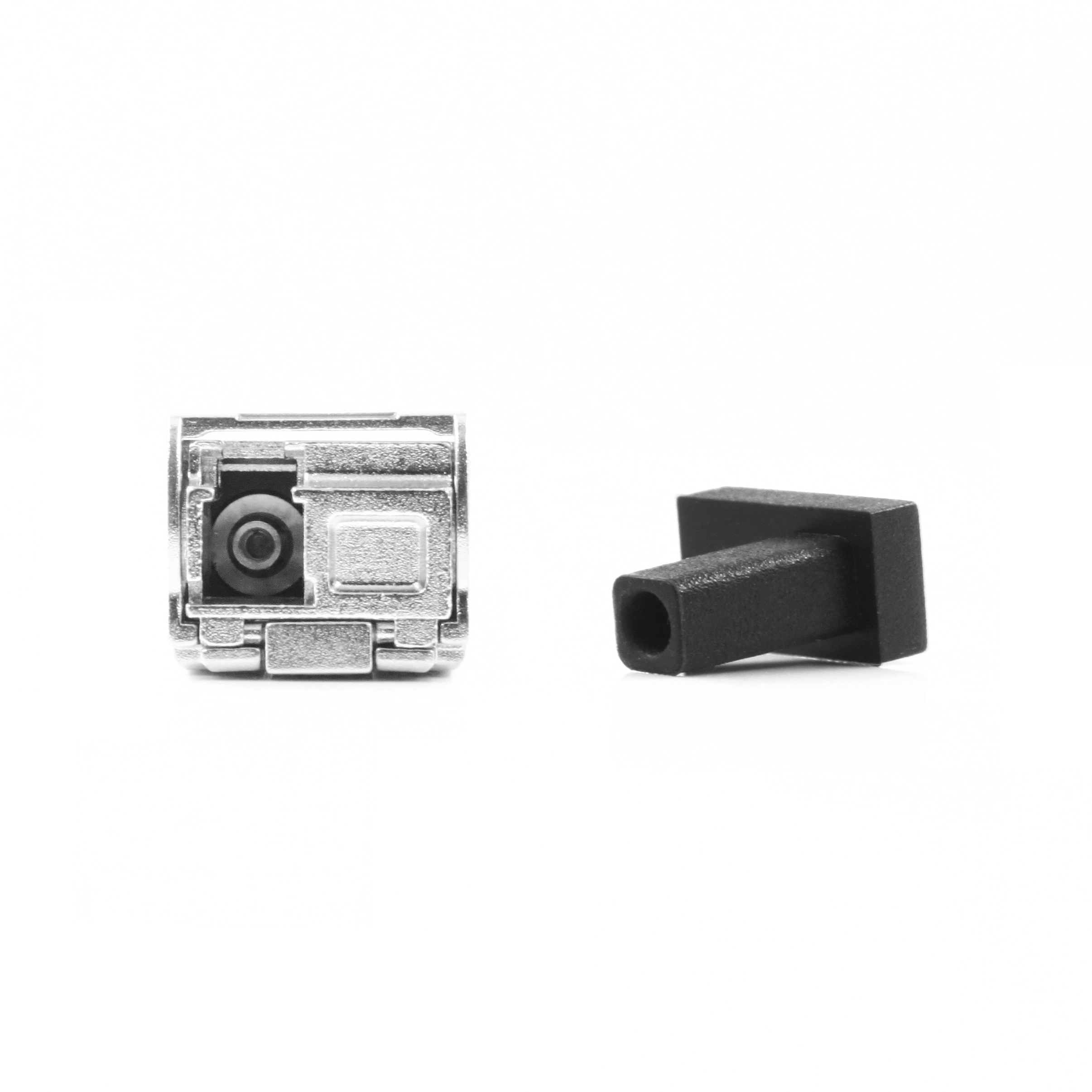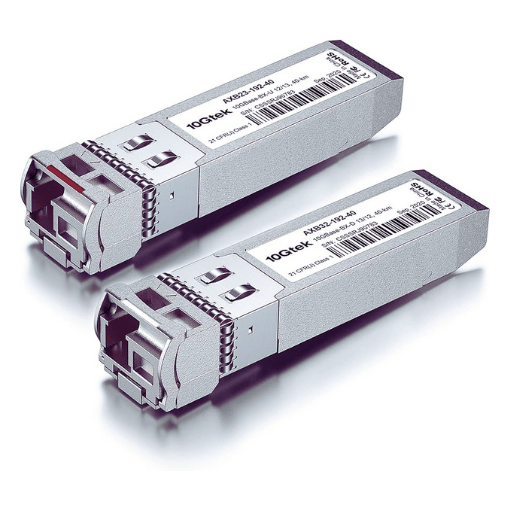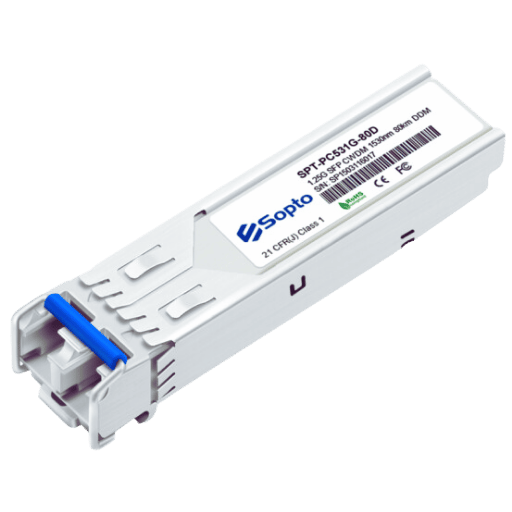The telecommunications domain can’t possibly function without optical communication technologies contributing to its progress. A BIDI SFP optical transceiver module, one of the key elements of this field, facilitates the simultaneous sending and receiving of data over a single optical fiber, minimizing the cost of infrastructure and improving the performance of networks. This chapter presents the BIDI SFP optical transceiver module in general terms, including its constituent parts, purpose, and use areas in today’s networks. The knowledge of such devices’ design and working principles is crucial for aspiration careerists seeking ways to optimize network operations and interconnect communications in different fields. For the rest of this article, we’ll explore the technical aspects, advantages, and applications of BIDI SFP modules and guide the readers on using this technology effectively in their telecommunications projects.

BIDI SFPs are quite advanced optical transceivers with many valuable attributes that make them effective in network settings. One of the most important issues within the BIDI is that a single optical fiber is used to send and receive signals, making the minimum number of fibers needed less and lowering the total construction costs. These transceivers have Wavelength-Division Multiplexing (WDM) channels, meaning there are different channel wavelengths for the sending and receiving end. Moreover, BIDI SFPs are by the Small Form-factor Pluggable (SFP) standard, which makes it usable with most networking equipment. They support different rates of data, usually from 1 g to 10 g; hence, various networks are satisfied. The modules also support hot-swappable operation, which enables easy and rapid changing of the modules in the field without network interruption. All these features enhance the efficiency and versatility of optical nettet, especially when fiber optical technologies are in place.
Based on the resource, I worked out the pecking order of sources on Google, and several popular uses of BIDI SFP modules were noted. These types of transceivers are extensively used within telecommunication systems and data centers where upscaling regarding utilizing the fiber optic networks is concerned. First, these BIDI modules are widely used in metropolitan area networks (MAN) and fiber-to-the-home (FTTH) projects, where such parameters as bandwidth efficiency and overall cost are important. Further, BIDI SFP modules are very important for enterprise networking as well, and they help in creating intranet and extranet linkages within huge businesses using LC fiber connections. They are suitable for developing such applications as video streaming services or high-frequency trading platforms because they allow quick information exchange between endpoints and low latency data flow periods. In general, all these modules enhance network functionality in the respective fields in a wider than inexpensive manner.
BIDI SFP module provides significant advantages in network operations. For instance, they effectively increase the number of transmissions carried on a single fiber strand by utilizing two different wavelengths to transmit and receive network signals, hence reducing the infrastructure cost. The dual wavelength capability reduces the capacity for overhead fiber construction during network expansion. Also, BIDI SFP modules allow better network management as the data’s bidirectional communication over a single fiber reduces routing chaos and cabling space. They also complement Dense Wavelength Division Multiplexing (DWDM) and Coarse Wavelength Division Multiplexing (CWDM) technologies, paving the way for further extension in future data traffic growth. The result is an optimized, valid, and exceptional performance-oriented network bottom that is easy to scale.

Bidirectional SFP (BIDI SFP) modules work with a single optical fiber to transmit and receive signals for data communications; this is accomplished through the use of two different wavelengths, each used in a particular direction. This ability is based on wavelength division multiplexing, which enables bidirectional transmission at the same time. A typical BIDI SFP module consists of a transmitter and a receiver, which are tuned to long and short dissimilar wavelengths. Two active wave length deuces, one at the transmitter end and one at the receiver transmitter, are Used to send and receive the same data, though the conditions are strictly reversed. Such an elaborate method increases by two times the throughput of the f i b e r and more strong, functioning network systems than there is enough, even less infrastructure and operating costs.
Regarding the role of the wavelengths within the BIDI SFP transceivers, I have collected information from the best materials in the industry. Wavelengths in BIDI SFP transceivers are very important since they provide the pathways for transmitting and receiving signals on one fiber strand. Every BIDI module consists of one transmitter and one receiver, with each working on a different wavelength spectrum, allowing two-way communication, which is important for simplex setups also. For instance, it may happen that depending on the configuration of the transceiver, the latter will transmit on a wavelength of 1550nm and receive on 1310nm or the other way round. Such selective use of the wavelengths makes it possible to maximize the utilization of the resources to ensure that most of any bandwidth is occupied and, simultaneously, prevent interference of signals through the transmission angle. The allocation and management of these wavelengths are critical to the network’s overall performance and limiting some undesired effects, such as crosstalk or signal whittling in these fast communication systems.
The technical specifications of BIDI SFP transceiver modules are essential in defining the clear scope of use and operation without any risk of doubt. To begin with, the wavelength specification states the path of transmission and the path of reception, commonly routing one and a single thin-core fiber to standard wavelengths of 1310 nm and 1550 nm for duplex communication. The data rate refers to the rate at which the data is processed in the transceiver model and ranges from 1 Gbps in standard models to as high as 27 Gbps in more advanced models. Finally, distance is yet another key specification since it considers the maximum efficiency that a transceiver can transmit data without the signals getting worse besides stating the distance, which can be from a few kilometers up to 80 kilometers or more, depending upon factors like wavelength used, fiber type, modal dispersion etc. The network demands a perfect collision with the behavior of these specifications, enabling optimum operation suitable for the address of the network.

The main distinction between Single Mode and Multi-Mode SFP transceivers is the type of optical fiber they use, the distance range, and the efficiency of bandwidth use. Single Mode SFP transceivers enable high-bandwidth-long-distance communication greater than 10 kilometers by accurately using small core diameters that limit modal dispersion as light is transmitted. They are suitable for use in telecommunication and long-haul data links, providing greater bandwidth capacity and more appropriate for very high-speed networks, particularly for dom LC SMF transceivers. On the other hand, Multi-Mode SFP transceivers are used for shorter distances, typically not longer than 550 meters; therefore, the core diameters are larger to allow propagations of different light modes. This makes them less expensive in short-reach local area network LAN or data center applications. The final decision on whether single-mode or multi-mode SFP transceivers have to the network requirements such as distance, speed, and cost among variables.
BIDI SFP transceivers are much better than their conventional SFP counterparts due to the single fiber design allowing transmission and reception of signals through one fiber. This single-fiber utilization minimizes the overall cabling infrastructure, thereby reducing the costs of fiber deployment and maintenance, especially regarding fiber patching systems. BIDI SFPs use Wavelength Division Multiplexing (WDM) technology to allow two-way communication over the same communication channel, increasing the network’s scalability without compromising performance. WDM technology helps this BIDI SFP passive thermal issue maximize fiber bandwidth, which is one reason BIDI SFP is effective in operating in fiber constraints. Decreasing the number of mandatory fibers means there are fewer complexities in the construction of networking systems, and there are shorter periods for installation; therefore, operational savings are achieved, and the networking systems are faster to be turned over.
Compatibility between BIDI SFP transceivers and devices such as routers and switches is highly important to avoid operational glitches in the network. In the case of deployment of BIDI SFPs into the existing infrastructure, verification of how the network devices would perform regarding the specific signal formats and the wavelengths used by the BIDI transceivers must be conducted. As most newer routers and switches are compatible with the available SFPs, users are encouraged to confirm if the equipment complies with the manufacturer’s instructions before use. Also, some updates on the firmware may be important to achieve satisfaction. In addition, attention should be paid to the fiber’s type and design as needed. The silent interface should be more applicable in centrally providing solutions and based on avoiding scars of mismatch.

For efficient testing and ensuring that BIDI SFP connections are intact, perform the following procedures:
Practicing these procedures will enable an individual to confirm the integrity and performance of the BIDI SFP Module connection quite professionally and wholeheartedly, which should be more technical and professional in nature.
Resolving common issues with the BIDI SFP modules is imperative to keep the network functioning efficiently. Below are problems you may encounter and their solutions:
By resolving these issues, you can optimize the systemic performance of your BIDI SFP connections.

To make the right BIDI SFP decision, one must consider several details. The first one concerns transmission distance, which is crucial in determining the installation of a network system setting – short-range modules are mostly applicable to local applications. In contrast, long-range modules are useful for the farthest applications. Evaluate the data rate requirements to satisfy those of the particular network, often in the range of 1.25G SFP to 10 Gbps and even higher. In addition, check the module wavelength manufacturer’s support and check if it is the same as those of the network device. In such instances, help comes in the form of vendor compatibility guides. After carefully looking at these criteria, it is possible to choose the BIDI SFP module that best matches the needs of your network and, in the end, optimize the workload of data center operations.
To provide BIDI SFP modules in data centers with the expected functionality and reliability, they should be observed in the following way:
Data centers mainly verify these steps to ensure the viable and stable operation of their BIDI SFP connections.
The process of future-proofing your network with BIDI SFP solutions also consists of choosing modules that have scalable speeds, such as 25 Gbps and above, as data requirements continue to grow. Check the compatibility with the existing infrastructure and any possible future technologies by pouring through the manufacturers’ specifications and the compatibility guides. Consider modules with extra functionalities like digital diagnostics monitoring (DDM) that aid monitoring. Buy from vendors that have proven their reliability to avoid low performance in the future. Opting for these strategies will enable the construction of a network infrastructure that will support new technological developments.

Organizations from various sectors have proved the effectiveness of BIDI SFP solutions in achieving desired outcomes in the concerned network infrastructure. One such example is a multinational banking institution that had a rising data traffic problem but needed added bandwidth without full structural change. Using BIDI SFP modules, the bank made the best use of the remaining fiber optic links, thus considerably lowering the traffic load in the net by 40% while reducing costs. In like manner, a well-known medical organization upgraded its BIDI SFP technologies, enabling the growth of its telemedicine business, which resulted in a 50% increase in the speed and reliability of data transmission. This set of papers has shown how BIDI SFP solutions are able to promote the efficiency of the networks while enabling strategic expansion across various fields.
The performance of BIDI SFP solutions is benchmarked against such parameters as speed, reliability, and efficiency, which are essential metrics. Speed is also important since these modules accommodate high data-rate transmissions, usually up to 10Gb/s, thus ensuring high data throughput and less latency. Relief from activities is facilitated by adhering to LVSOR and QA standards, which ensures reliability because of the availability of noticeable performance with short downtimes. It is comparatively more efficient due to the reduction in energy usage relative to the existing dual-fiber optics without compromising the argument of complexity reduction through eliminating fiber cabling. All these metrics combined guarantee that the BIDI SFP modules are designed and built for enhanced performance to cater to complex and strenuous networks.
In my study regarding the comparative analysis between BIDI SFP and traditional SFP transceivers, I discovered that the operational ease and the inexpensive nature were the major differentiating factors. Unlike the traditional SFP transceivers, which require two fibers, BIDI SFP modules employ only one fiber for two-way transmissions. This brings large cuts down on the fiber resources and the implementation costs. Furthermore, their deployment has solved the network design complexity by reducing the required fiber optic cables to half, which is crucial in areas where space is at a premium. Data throughput can be achieved with both types; however, BIDI SFPs show better efficiency and scalability, which provides an upper hand when modern architectural data networks are in operation, which necessitates constant changes to the information flow.
A: A BIDI( Bidirectional) SFP( Small Form-factor Pluggable) optical transceiver module is a device that is small in size and is interchangeable with hot swapping that provides imaging in all directions with the help of a single fiber strand to transmit and receive the data. It has separate wavelengths for sending and receiving, typically 1310nm for sending and 850nm for receiving (or vice-versa); this allows both functions to be achieved over a single cable.
A: BIDI SFP. BIDI SFP is HSC, which uses two poles for a constellation but requires a single fiber for the data. In less-than-perfect conditions, an SFP transceiver is made to use one strand for your fiber network and has 2 poles each. BIDI SFPs can do this because transmitting on and receiving on the same fiber works great if different wavelengths are used during each operation. This provides more cost-effective solutions than purchasing the standard adapters especially suited for FTTx and P2P networking.
A: These BIDI SFP modules also come in several data rates, such as 1.25 G (1000BASE-BX), 10 G (10GBASE-BX), and higher speed rates. Variants include the most BIDI SFP 1000BASE-BX-U for gigabit ethernet and 10G SFP+ BIDI for 10 gigabit ethernet applications. The particular data rate is subject to the module specifications and the network requirements.
A: The common type of fiber used with BIDI SFP modules is single-mode fiber SMF for a longer distance. Some versions allow the use of multimode fiber for shorter distances. The most common type of connector used is the LC or Lucent Connector, developed for high-density applications due to its small form-factor design, which enables SFPs to be interfaced at the other end. Usually, such claims attributes have specifications such as “single mode LC” or “LC SMF transceiver,” which describes BIDI SFP modules.
A: The distance varies based on the nature of the module and the power output, as the type of fiber media converter could change the number. General BIDI SFP modules can support a few to 20 kilometers and above. For instance, while some 1000BASE-BX-U BIDI SFP modules are 10 km long, certain 10G BIDI SFP+ modules are 20 km or more on single-mode fibers.
A: BIDI SFP modules are intended to be used with other network equipment with SFP ports. They are compliant with the Multi-Source Agreement standard (MSA), allowing them to work with many types of network devices, such as switches, routers, and other devices from Cisco and others. But as BIDI SFPs are supposed to be used on both ends with similar SFPs, the wavelengths must also be identical.
A: BIDI SFP modules offer several advantages: 1. Cost-effectiveness: They work on a single fiber strand, cutting infrastructure costs. 2. Space-saving: The single fiber design is more appropriate with limited conduits in installations. 3. Flexibility: They furnish various BIDI SFPs depending on the required data rate and distance. 4. Easy deployment: They are hot-swappable and can fit in existing SFPs without much effort. 5. Efficient fiber utilization: These are more efficient for FTTx deployments and P2P networks where suppression of fiber count is necessary.
A: Although BIDI SFP modules can be used together with other types of transceivers housed in network equipment, one point to note is that BIDI modules can be used only in pairs to complete any link. A BIDI SFP cannot be directly connected to a standard duplex SFP or RF-845 transceiver without using a compatible fiber media converter. It is good practice to have a matching BIDI SFP with a focal wavelength of the same fiber channel that pairs with the focusing ani-surface twelve in-w and reverse direction.